Memorial Museum of Paneriai |
← |
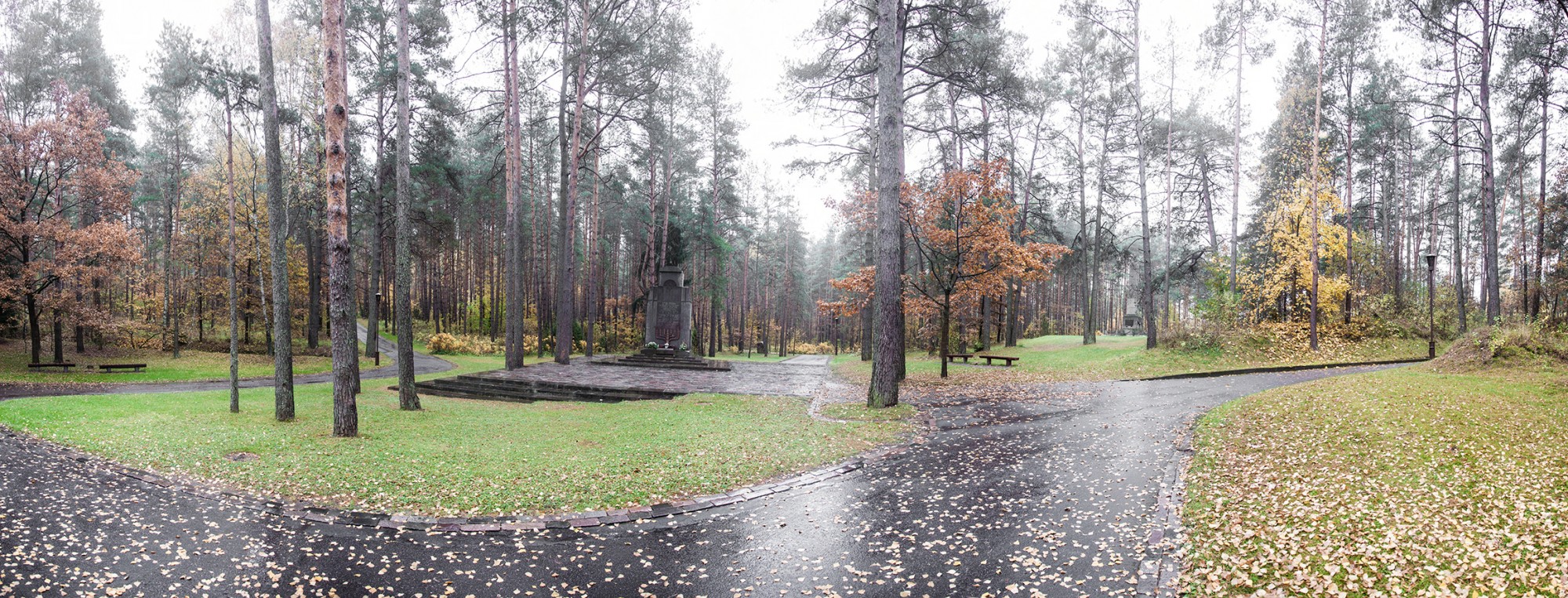
The monument at Paneriai with inscriptions in Yiddish and Russian was erected by Holocaust survivors in spring 1948. It disappeared in 1952. It was rebuilt to soviet obelisk with the star on the top of it, dedicated to the "Victims of Fascist terror".
The museum was opened in 1960 at the mass murder site (at that time it was a branch of the Vilnius Regional Museum). In 1985 a new museum building was built and the exhibition overhauled. The territory was also renovated under architect Jaunutis Makariūnas – the small roads were asphalted, the burial pits were renovated and commemorative stones with Russian and Lithuanian inscriptions were erected. On July 1991 the Jewish community together with Vilnius commitee in Israel erected the first memorial stone with inscriptions in Hebrew, Yiddish, Lithuanian and Russian. In autumn 1990 the Polish community erected monument to Poles who perished in Paneriai. In year 1992 m. the obelisk to Lithuanians was built.
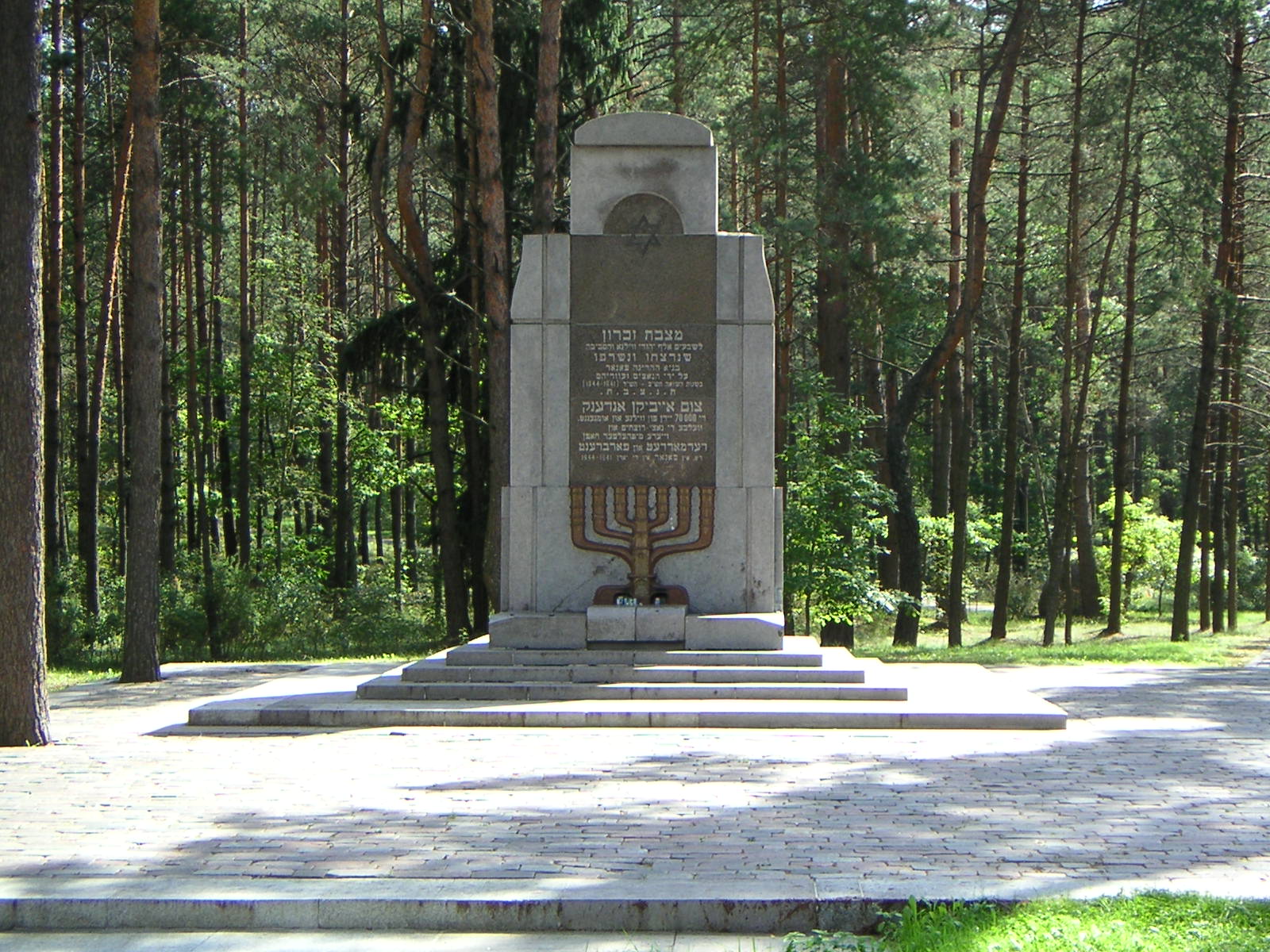
Memorial stone for Jews murdered in Paneriai.
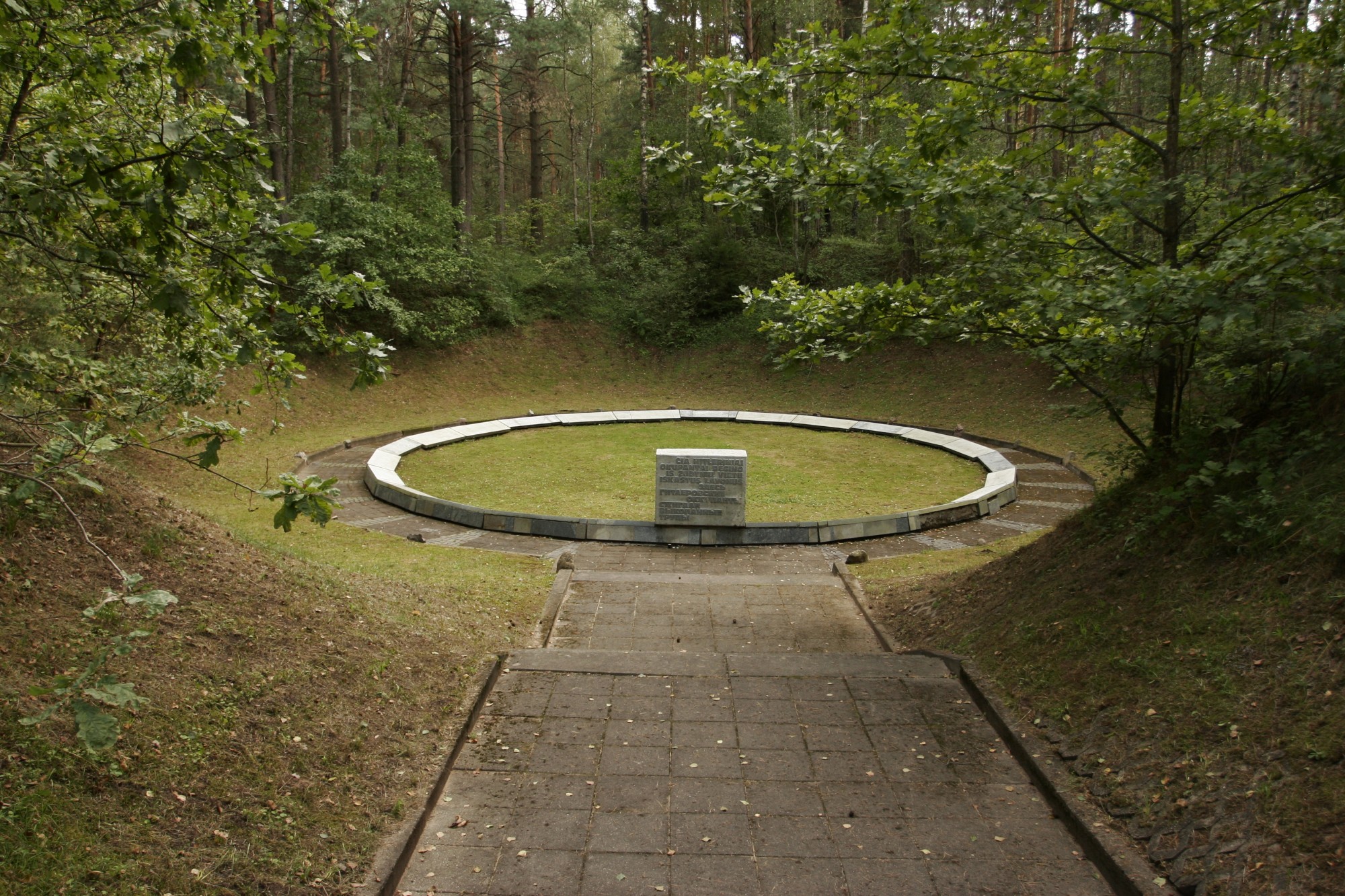
One the massacre pits.
In 1991 the Paneriai Memorial Museum was transferred to the Vilna Gaon State Jewish Museum.
In 2009, for the 50 year anniversary of the museum, parts of its exhibition were renovated. The exhibition at the Paneriai Memorial Museum shows documents and reports issued by the Nazi occupiers, personal belongings of killed victims found in the area of the massacres, belongings of killed children found in the pits, sieve used to sift the ashes of burnt corpses for gold, a hook used to drag the corpses out of the pits, chains used on prisoners who burnt corpses; also the clothes of the escape leader Yuri Farber, archaeological objects found at Paneriai in 1964, 1973, 2004. In 2018, the Museum was renamed to Paneriai memorial Visitors information center and new exhibition was established, presenting current archeological and geophysical surveys in the memorial.
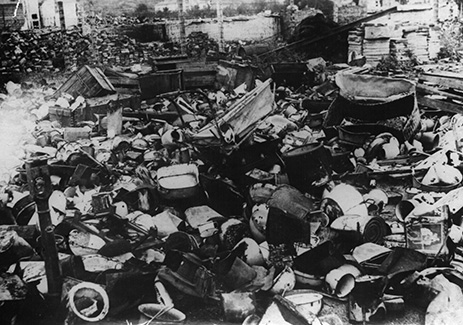
Belongings of murder victims. The begining of 1940’s
A very special exhibit is the ladder-ramp (copy) which was used from the end of 1943 by the Burning Brigade to burn corpses.
The word Paneriai meant death in the Vilnius ghetto. It was very often referred to by the prisoners of the ghetto to express their fear and despair in poems, songs and paintings. Eleven year-old Alik Wolkowiski won a ghetto prize in February 1943 for the moving melody that he composed for Polish lyrics written by his father, Dr. Noach Wolkowiski.
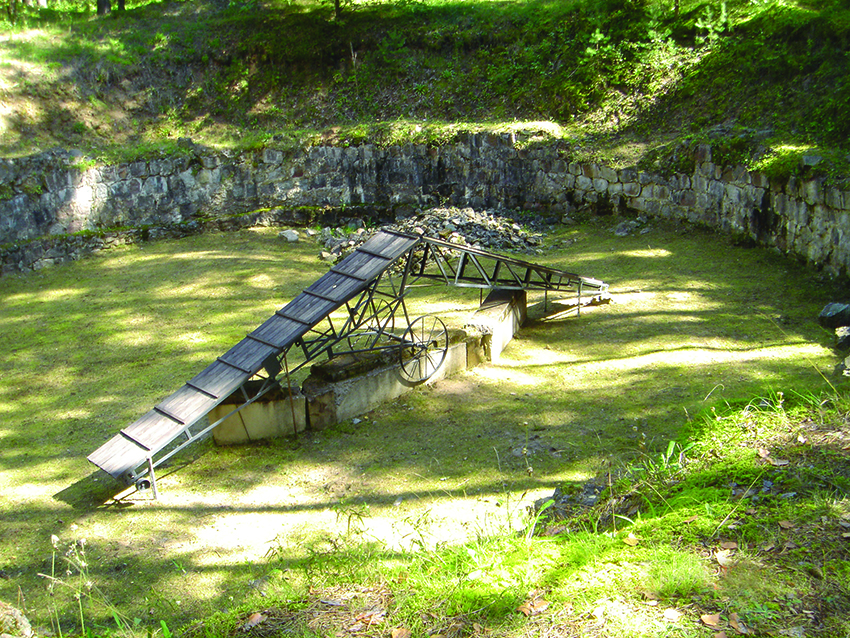
Ladder-ramp (copy) used to throw corpses onto the fire. 1940‘s
Szmerke Kaczerginski made a poetical translation into Yiddish. This song became very popular in the Vilnius ghetto and it remained famous until today.
Visitors can listen to this song at the permanent exhibition “Rescued Lithuanian Jewish Child Tells about Shoah” at the Tolerance Centre of Vilna Gaon State Jewish Museum (Naugarduko g. 10/2).
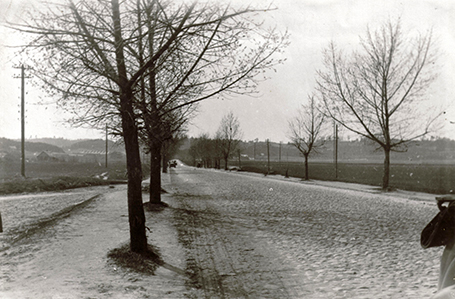
The road to Paneriai. The second part of the 20th century
History of the building |
| Before World War II, Paneriai Forest located in the vicinity of Vilnius was very popular among holidaymakers. In 1939 Lithuania regained Vilnius and the Vilnius region and was forced to let units of the Red into the country. Almost right away the construction of Red Army aviation fuel depots and ammunition warehouses started in Aukštieji Paneriai. When on 24 June 1941 the Germans occupied Vilnius, they discovered the unfinished liquid fuel depot close to the Paneriai railway station. At that time there were seven pits made for that purpose, and the Nazis decided to use them for the planned mass extermination of people. The persecution of the Jews in Vilnius began on the first days of the Nazi occupation. Jews were randomly arrested by local white stripes in the streets, in homes, and at work. More and more restrictions were forced upon the Jews by the new occupiers. In response to Order No. 1 issued by the military commander of the city of Vilnius, von Ostman, 60 Jews and 20 Poles were arrested and sent to the hard labour prison in Vilnius “to ensure public order” on 26 June 1941. As hostages of the Nazis, employees of the State Security Department of Vilnius County and other Lithuanian state offices might have helped with the arrest of the Jews. On 21 July 1941, German officials took 60 Jews from the prison and killed them on Titnago Street not far from Paneriai Forest. 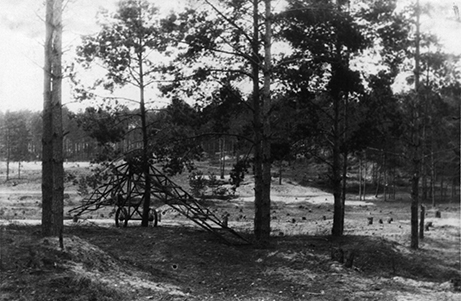 Ladder-ramp used to throw corpses onto the fire. 1940‘s The first execution of people in Paneriai took place on 11 July 1941. That day 348 people (Jews and Soviet prisoners of war) were taken from Lukiškės Prison to Paneriai and shot. The first reference to the Vilnius Special Squad is found in documents dated 15 July 1941. At that time the squad had about 100 members who dressed in civilian clothes. The first organisers of the squad were Junior Lieutenants Jakubka and Butkus. Later Juozas Šidlauskas (from 23 July 1941) took command of the squad. Members of the squad were issued Russian guns and white armbands. In November 1941, Šidlauskas was relieved of command of the squad and Lieutenant Balys Norvaiša was appointed instead, with Lieutenant Balys Lukošius as his assistant. During this period the number of members of the squad was reduced to about forty or fifty. The majority of members were Lithuanians, although there were several Russians and Poles. The Special Squad was subordinate only to the German Security Police and carried out their orders. SS-Hauptscharführer Martin Weiß (Weiss) supervised the Special Squad the longest. He was not just in charge during the executions in Paneriai, but often finished off the wounded victims personally with a revolver. The largest number of people executed by the Special Squad was in 1941, when in July alone about 5,000 people were shot, with another 2,000 killed that August. 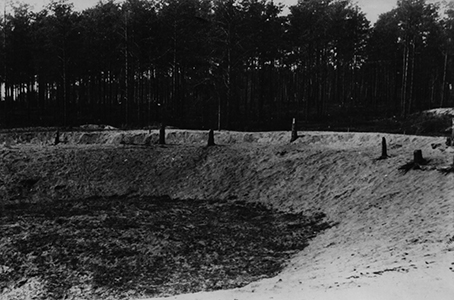 The pit in Paneriai. The begining of 1940‘s According to the report of SS-Standartenführer Karl Jäger, by the end of 1941 at least 21,000 Jews were killed. In 1942 people were brought to Paneriai in smaller groups from the Vilnius ghetto. In 1943, during the course of the liquidation of the smaller ghettos in the Vilnius area, about 7,500 Jews were executed and later, on 23 September (the liquidation of the Vilnius ghetto), a few hundred old and sick people were murdered in the pits of Paneriai. From the end of September to the beginning of November, about 1,000 Vilnius ghetto prisoners who tried to escape from the ghetto were killed. 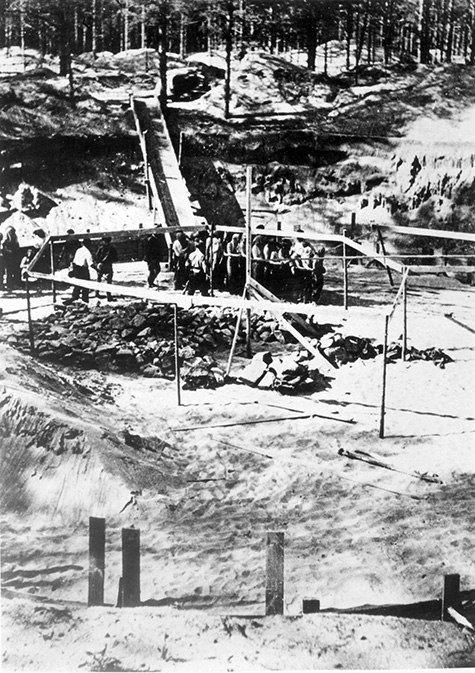 Execution in Paneriai. The begining of 1940‘s After the liquidation of the Vilnius ghetto, there were about 3,000 Jews left in the Kailis and HKP labour camps in Vilnius. On 27 March 1944, the Children’s Action took place (246 children and old women were seized by the Nazis). Few managed to survive. On 2–3 July 1944, both labour camps were surrounded by SS soldiers. The Jews were forced into trucks and driven to Paneriai. About 2,000–2,300 Jews were shot there by the SS soldiers. 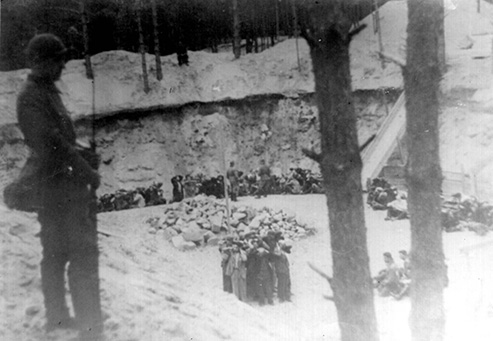 Massacre action in Paneriai (July 11, 1941). The begining of 1940‘s Just before they withdrew from Lithuania, the Nazis tried to hastily erase all the evidence of their crimes. A special brigade of inmates from HKP and Kailis and prisoners of war unearthed the corpses and burned them (the burner brigade). On 15 April 1944, twelve of the eighty prisoners escaped (in the course of 2.5 months they had dug a tunnel approximately 30 m long). Eleven managed to reach Soviet partisan units. In August 1944 the Special Extraordinary Investigation Commission determined that more than 100,000 people had been killed in Paneriai. This number was considered accurate. The number of Jews murdered is estimated to be about 70,000. The other victims were Lithuanian soldiers, Roma, communists, Polish resistance fighters, and Soviet POWs. According newest investigations by historians of the Museum, 50 000 - 70 000 people had been killed in Paneriai, the absolute majority of them - Jews from Vilnius and Vilnius region. Photos from the collection of VGSJM Photos from the collection of Yad Vashem |
| ↑ | ← |

